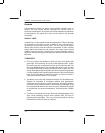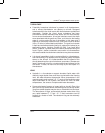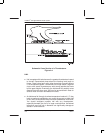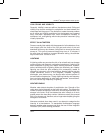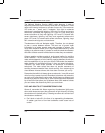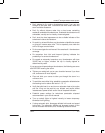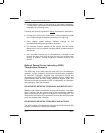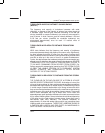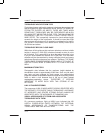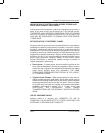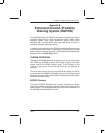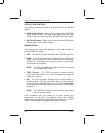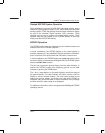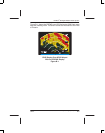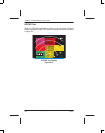
PRIMUS
R
660 Digital Weather Radar System
A28–1146–111
REV 2
Federal Aviation Administration (FAA) Advisory Circulars
A–12
TURBULENCE ABOVE STORM TOPS
Flight data shows a relationship between turbulence above storm tops
and the airspeed of upper tropospheric winds. WHEN THE WINDS AT
STORM TOP EXCEED 100 KNOTS, THERE ARE TIMES WHEN
SIGNIFICANT TURBULENCE MAY BE EXPERIENCED AS MUCH
AS 10,000 FEET ABOVE THE CLOUD TOPS. THIS VALUE MAY BE
DECREASED 1,000 FEET FOR EACH 10–KNOT REDUCTION OF
WIND SPEED. This is especially important for clouds whose height
exceeds the height of the tropopause. It should be noted that flight
above severe thunderstorms is an academic consideration for today’s
civil aircraft in most cases, since these storms usually extend up to
40,000 feet and above.
TURBULENCE BELOW CLOUD BASE
While there is little evidence that maximum turbulence exists at middle
heights in storms (FL 200–300), turbulence beneath a storm is not to
be minimized. This is especially true when the relative humidity is low
in any air layer between the surface and 15,000 feet. Then the lower
altitudes may be characterized by strong outflowing winds and severe
turbulence where thunderstorms are present. Therefore, THE SAME
TURBULENCE CONSIDERATIONS WHICH APPLY TO FLIGHT AT
HIGH ALTITUDES NEAR STORMS APPLY TO LOW LEVELS AS
WELL.
MAXIMUM STORM TOPS
Photographic data indicates that the maximum height attained by
thunderstorm clouds is approximately 63,000 feet. Such very tall storm
tops have not been explored by direct means, but meteorological
judgments indicate the probable existence of large hail and strong vertical
drafts to within a few thousand feet of the top of these isolated
stratosphere–penetrating storms. THEREFORE, IT APPEARS
IMPORTANT TO AVOID SUCH VERY TALL STORMS AT ALL
ALTITUDES.
HAIL IN THUNDERSTORMS
The occurrence of HAIL IS MUCH MORE CLEARLY IDENTIFIED WITH
THE INTENSITY OF ECHOES THAN IS TURBULENCE. AVOIDANCE
OF MODERATE AND SEVERE STORMS SHOULD ALWAYS BE
ASSOCIATED WITH THE AVOIDANCE OF DAMAGING HAIL.
VISUAL APPEARANCE OF STORM AND ASSOCIATED
TURBULENCE WITH THEM
On numerous occasions, flight at NSSL have indicated that NO
USEFUL CORRELATION EXISTS BETWEEN THE EXTERNAL
VISUAL APPEARANCE OF THUNDERSTORMS AND THE
TURBULENCE AND HAIL WITHIN THEM.



